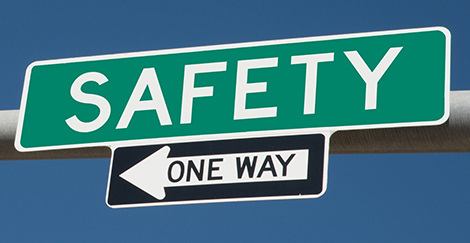Georgia Department of Transportation (GDOT) recently unveiled their new Highway Emergency Response Operator (HERO) trucks. The HERO program underscores the agency’s commitment to auto safety as well as their “good neighbor” policy.
Safety of HERO Patrol Officers
HERO patrol operators assist stranded motorists and keep highways throughout the area safer. The program is a leader for safety within the Safety Service Patrol industry and the new vehicles will be more visible on the side of the roadways. The new trucks are 13 feet long by eight feet wide by eight feet tall, making them more visible. The first trucks are scheduled to enter roadways on December 10, 2015.
More Safety Features
The new trucks feature roll-up doors and compartments, providing easier maneuverability for operators. In addition, they take less time to open, are well-lit and easier to navigate. This quick access allows operators to quickly access the tools they need when responding to a roadside incident. Because every second counts when the operators respond to an emergency, the new trucks will improve response time as well as the safety of the patrol officers. Although the vehicles do not have towing capabilities, the push bumpers allow them to gently push a vehicle to the shoulder.
HERO Patrol Routes
Currently, HERO operators patrol the following freeways in the Atlanta area:
- I-20 between Thornton Road and SR 20/SR 138/Stockbridge Highway
- I-75 between SR 155 and Emerson-Allatoona Road
- I-85 between SR 74/Senoia Road and SR 20
- I-285 between Washington Road and Old National Highway
- I-575 between Barrett Parkway and Townlake Parkway
- I-675 between I-75 and I-285
- I-985 between I-85 and Spout Springs Road/Flowery Branch Road
- SR 16/Lanford Parkway between I-285 and I-75/85
- US 78 between Valley Brook Road/North Druid Hills and West Park Place Boulevard
- SR 400 between Sidney Marcus Boulevard/Piedmont Road and Windward Parkway
About the Program
HERO operators are not law enforcement officers, although they are qualified to assist officers at the scene of an incident. All HERO patrol operators are issued uniforms that make them easily identifiable as well as identification that they can present if required. HERO technicians are primarily responsible for incident management and roadway clearance. They do not assist stranded motorists on the side of the road except as a secondary duty when time allows. They are not permitted to stop when in route to major traffic incidents or severe weather. Vehicles that are obstructing the roadway, however, are exceptions and HERO operators are permitted to assist in those conditions. The program was designed to reduce lane blockages due to accidents. According to GDOT, one minute of lane blockage can result in four to seven minutes’ delay to motorists. On average, the operators assist up to 100,000 motorists each year.
The HERO program provides residents with a safer alternative when roadside emergencies occur. When a roadside emergency does occur, you want an insurance company you can trust. Contact Waggoner Insurance for all your auto, home, life, health and business insurance needs.
Source:
Patch






